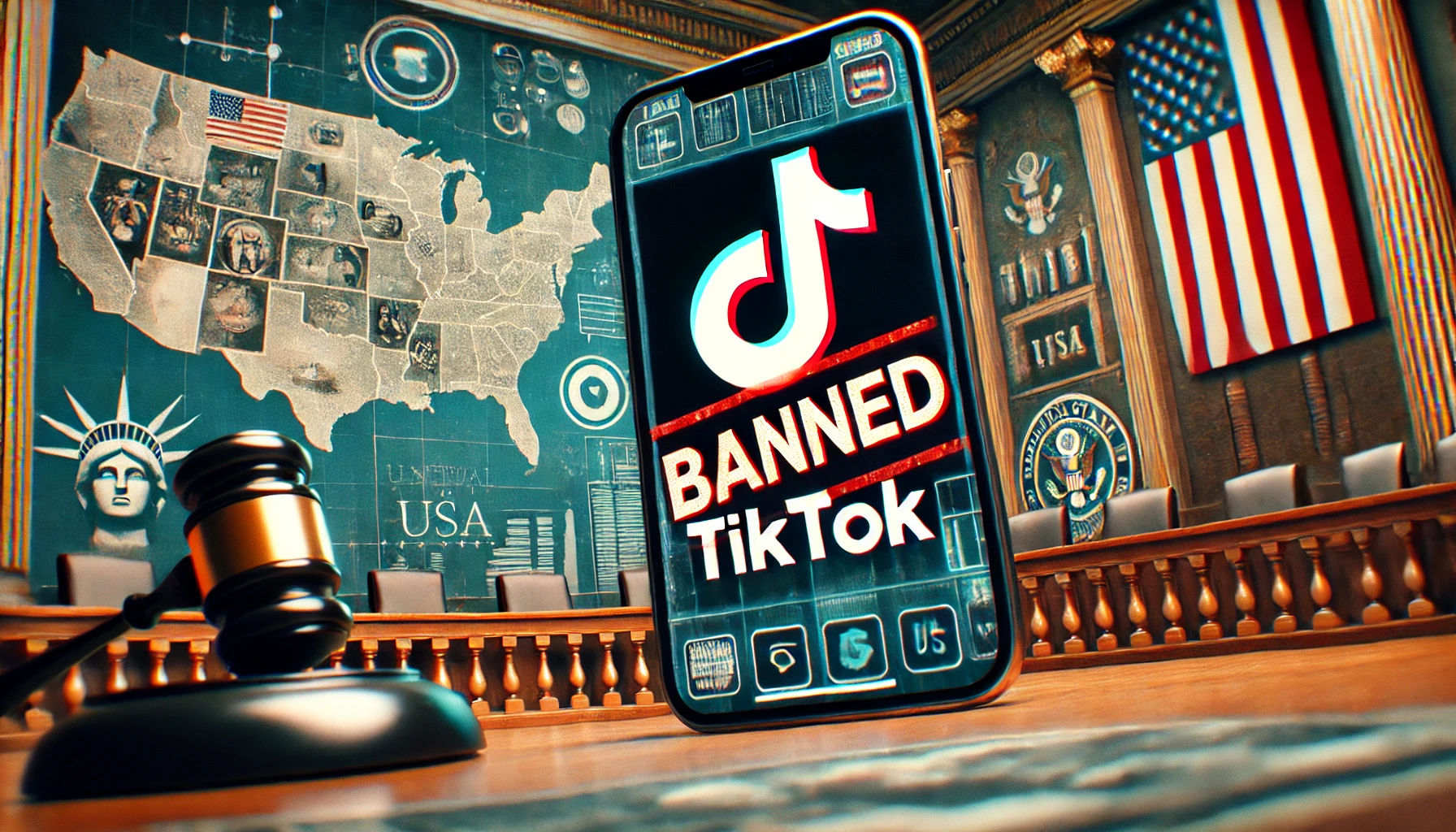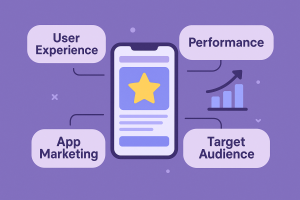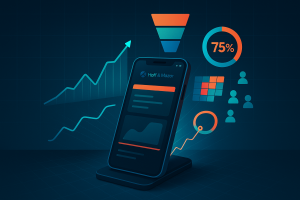Social media platforms have become an integral part of everyday life. TikTok, a Chinese-owned app is one such platform that has amassed over a billion active users globally, with millions of them residing in the United States. However, in early 2025, TikTok faced a significant legal and political challenge in the U.S., which threatened its very existence in the country. Due to national security concerns, there was a real risk that TikTok could be banned in the U.S. — a move that would have had severe ramifications for both users and businesses.
In a surprising turn of events, former U.S. President Donald Trump intervened to prevent the ban, and with his influence, TikTok was restored to U.S. users. This moment marked a dramatic chapter in the ongoing saga of data privacy, foreign influence, and government intervention in the tech world. This blog post will delve into the political developments surrounding TikTok’s potential ban, Donald Trump’s role in its restoration, and the broader implications for the tech and social media landscape in the United States.
The U.S. Government’s Stance on TikTok
The controversy surrounding TikTok in the United States began long before 2025. While the app gained significant popularity, especially among younger audiences, it quickly raised national security concerns. These concerns were centered around the idea that TikTok, owned by ByteDance, a Chinese company, could be using the vast amount of personal data it collects from its U.S. users to influence U.S. politics, spy on individuals, or hand this data over to the Chinese government. The growing tensions between the U.S. and China only exacerbated these concerns.
By 2024, these fears culminated in the Protecting Americans from Foreign Adversary Controlled Applications Act (PAFACA), which sought to address the growing risks posed by foreign-controlled tech companies. The legislation set a strict deadline for ByteDance to divest its U.S. operations or face a nationwide ban of TikTok. ByteDance was given until January 19, 2025, to comply with the U.S. government’s demand to separate its U.S. business interests from China, or TikTok would be shut down.
This ultimatum reflected the U.S. government’s growing focus on safeguarding data privacy and limiting foreign influence over American digital infrastructure. As the deadline approached, many American users and businesses began to prepare for the possibility of losing access to the app, which would have disrupted personal and professional lives across the country.
The Imminent Ban: January 2025 Crisis
The deadline passed with no agreement between ByteDance and the U.S. government. On January 18, 2025, the U.S. government announced that TikTok would be shut down, effective immediately. This decision caused widespread panic among the app’s millions of American users, many of whom had become dependent on TikTok not only for entertainment but also for business, brand promotion, and social interaction.
For influencers, small business owners, and marketers, TikTok represented a vital platform for reaching younger demographics, and its removal from the U.S. market would have had far-reaching economic consequences. The TikTok ban also raised questions about the broader implications for digital free speech and access to global platforms, particularly in light of the U.S. government’s increasing control over the digital space.
While TikTok had already faced scrutiny from U.S. lawmakers in the past, including attempts by previous administrations to ban the app, the 2025 crisis was different. This time, the U.S. government’s actions seemed more serious and immediate, threatening to permanently disrupt the platform’s operations in the U.S.
Donald Trump’s Intervention: A Last-Minute Lifeline
Just as the deadline passed and the TikTok ban seemed inevitable, former U.S. President Donald Trump stepped in with a bold intervention. Despite not being in office at the time, Trump, a vocal critic of China and a proponent of “America First” policies, announced plans to issue an executive order on January 20, 2025, to prevent the TikTok ban from taking effect.
In a move that surprised many, Trump proposed a joint venture that would allow TikTok to continue operating in the U.S. under the oversight of a U.S.-based entity. His plan involved the U.S. government acquiring a 50% stake in a new venture that would oversee TikTok’s operations in the country. This initiative was aimed at addressing national security concerns while also ensuring that the app’s U.S. users could continue to access the platform without disruption.
Trump’s intervention was seen as a pragmatic solution that balanced national security interests with economic and political realities. By offering a compromise that would allow a U.S. entity to have a controlling interest in TikTok’s operations, Trump sought to alleviate concerns about Chinese influence over the app while preserving its popularity in the U.S.
TikTok’s Restoration: A Swift Resolution
Thanks to Trump’s intervention, TikTok services were quickly restored in the U.S. after the initial shutdown on January 18, 2025. Within hours, users who had previously been locked out regained access to the app, and business as usual resumed. TikTok’s U.S. operations were effectively saved by the proposed joint venture, and ByteDance expressed its gratitude for the U.S. government’s involvement in resolving the issue.
TikTok’s CEO issued a statement thanking President Trump for his efforts, which allowed the platform to continue operating while also complying with the U.S. government’s data privacy concerns. The proposed joint venture with the U.S. government was seen as a temporary solution, but one that allowed the platform to maintain its foothold in the U.S. market while working to address regulatory issues.
While the ban had been avoided, questions remained about the long-term future of TikTok in the U.S. Many lawmakers, especially from the Republican and Democratic parties, still voiced concerns about the app’s ties to China and its potential use for espionage or manipulation. This means that while TikTok had survived for now, the platform would continue to face regulatory pressure in the years to come.
The Debate Over Data Privacy and National Security
The controversy surrounding TikTok’s potential ban goes beyond the specific case of one app. It underscores the broader concerns about data privacy, national security, and foreign influence in the digital age. TikTok, like other foreign-owned platforms, was caught in the crosshairs of a growing global debate about the control of data and its potential to be used for political or economic leverage.
On one hand, proponents of the ban argued that TikTok’s ownership structure posed a direct threat to U.S. national security. The idea that a Chinese company could potentially access and misuse the personal data of millions of Americans was alarming to many lawmakers, particularly in the context of the ongoing trade war and geopolitical tensions between the U.S. and China.
On the other hand, opponents of the ban argued that it represented an overreach of government power and a threat to digital freedom. They contended that banning TikTok was a drastic move that would harm American businesses, influencers, and creators who rely on the platform to reach audiences. Critics also pointed out that there were already existing data privacy laws in the U.S. that could address concerns without resorting to a ban.
Ultimately, Trump’s intervention helped to avoid an all-out ban, but it did not eliminate the fundamental questions about data privacy and national security that continue to surround TikTok.
Business Impact: The Marketing World Breathes a Sigh of Relief
One of the most immediate impacts of Trump’s intervention was felt by the business and marketing world. Influencers, brands, and small businesses that had heavily invested in TikTok as a marketing platform were initially left in limbo when the ban was announced. TikTok had become a critical tool for reaching younger audiences and driving engagement through short-form videos. A permanent ban would have forced these businesses to find alternative ways to connect with their target market.
Thanks to Trump’s intervention, the threat to these businesses was temporarily lifted. TikTok’s continued operation means that marketers can continue to leverage the platform for brand awareness, product launches, and influencer marketing campaigns. However, the uncertainty surrounding TikTok’s future means that businesses must remain cautious and consider diversifying their digital marketing strategies to mitigate the risks of future disruptions.
Moreover, businesses involved in mobile app development may now take additional notes on the growing influence of government regulation on tech platforms. Mobile app developers may face more scrutiny and a need for greater transparency in data privacy practices, especially for global platforms with millions of users.
Looking Ahead: What Does the Future Hold for TikTok?
While TikTok was saved from a permanent ban in the U.S., its future remains uncertain. The platform will likely continue to face regulatory pressure, particularly as lawmakers and security agencies scrutinize its operations and data practices. The proposed joint venture with the U.S. government may provide a temporary solution, but it’s unclear whether this will satisfy all concerns or whether more stringent regulations will be introduced in the future.
Moreover, TikTok’s success in the U.S. may inspire other countries to take similar actions against foreign-owned tech platforms. The geopolitical landscape is constantly shifting, and the role of social media companies in shaping public discourse and influencing political outcomes will continue to be a contentious issue.
Conclusion
Donald Trump’s intervention played a pivotal role in preventing TikTok’s U.S. ban and allowing the platform to continue operating in the U.S. amid political turmoil. While the ban was temporarily averted, the debate surrounding TikTok’s data practices, national security concerns, and foreign ownership will likely persist for years to come. The case of TikTok serves as a powerful reminder of the growing intersection between technology, politics, and national security — and the need for careful regulation to ensure that digital platforms serve the best interests of their users and countries alike.







